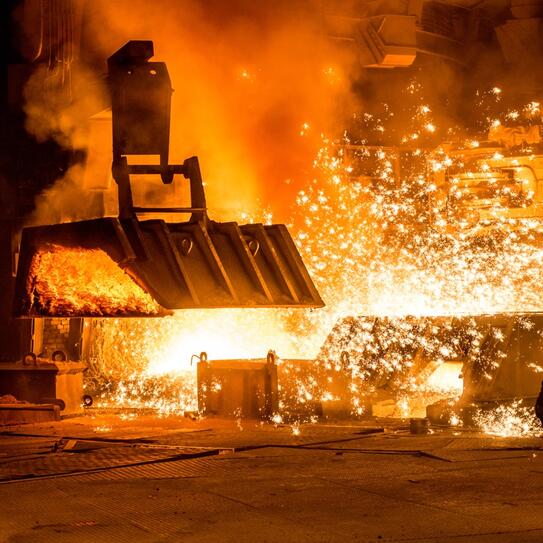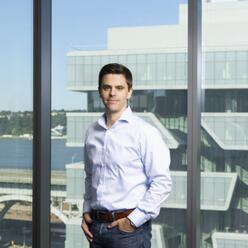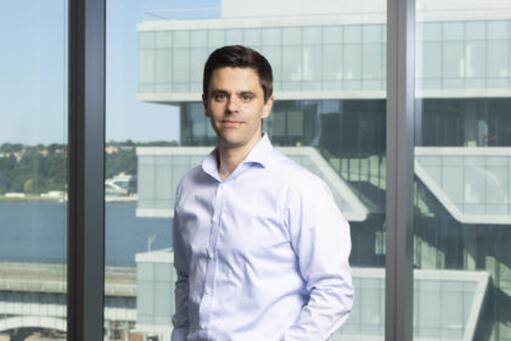Knowledge of the basic chemical process to make iron is older than the periodic table: iron ore + coal = iron + carbon dioxide. That last part – CO2 – has put the iron and steel industry under the spotlight for its contribution to climate change. Steel (an iron-carbon alloy) alone accounts for some 8% of annual global CO2 emissions, and well over 10% if one includes the industry's emissions from electricity generation and coal mining.
Fortunately, it is both technically possible and economically feasible to eliminate almost all the CO2 from iron- and steel-making by mid-century. Getting there, however, will require a targeted policy push.
The key is first to identify the primary source of emissions. Over 80% result from the initial step: digging up iron ore, which is largely made up of iron and oxygen, and chemically separating the oxygen. The main ingredient used to achieve this “reduction” is coal, which of course generates massive amounts of CO2. At this point, turning iron into steel becomes a comparatively low-carbon process.
One way to cut the industry's emissions, then, is to avoid that first step altogether by recycling more iron and steel products than we currently do. While the iron and steel recycling rate hovers around 80-90% in the United States, and over 80% globally, the fact remains that steel is 100% recyclable. To recycle all of it means pushing designers to make products that are easier to disassemble, to more easily remove copper wiring and other contaminants.
Another important factor is basic material efficiency: using less steel in the first place, with architects and structural engineers minimizing its use in their designs. Governments, the largest buyer of infrastructure, have an obvious role to play here. But so, too, do the architecture and engineering professions, as well as car manufacturers.
Steel could become the poster child of the circular economy, but only if governments introduce policies targeting each step in the steel supply chain. Recycling and material efficiency both add physical, logistical, and managerial complexities, which implies that industries will not adopt them automatically, even if they ultimately reduce costs. That means improving building and vehicle manufacturing codes (while being mindful of larger trade-offs with other materials, including glass, cement, and metals like aluminum), and compelling steel consumers to recycle all scrap.
Decarbonizing the next generation of iron and steel plants will require a different kind of government push to enable large new capital investments. This is no small task. We must replace the blast furnace of yore and the basic oxygen furnace as the workhorses of iron and steel production.
When it comes to turning iron into steel, electric arc furnaces are an effective solution, and now account for over 70% of steel production in the US, up from 15% in 1970 and just under 50% in 2000. To replace blast furnaces that use coal, there are currently two options: furnaces that rely on low-carbon hydrogen to strip oxygen from iron ore; and novel electrochemical processes that can do so with electricity.
Variations of the hydrogen-based option (first developed in the 1970s) currently account for 5% of global steel production, but they are currently still more expensive than traditional blast furnaces. The added costs amount to around $200-300 per ton of avoided CO2, which is 2-3 times the prevailing carbon price in Europe, and significantly higher than carbon prices almost anywhere else. Though such prices may well be justified from a climate perspective, it will take policy interventions to bring markets along.
But while steel decarbonization would benefit from sustained high carbon prices, what it really needs is a policy strategy that is both larger and more focused. The immediate task is to get the first wave of near-zero-emissions plants built so that they can become the new standard.
The world's first full-size, clean-hydrogen steel plant is being built by H2 Green Steel in Boden, just south of the Arctic Circle in Sweden, which has near-perfect policy conditions for it. Not only are Sweden's energy and steel sectors covered by the European Union's emissions-trading system; but, thanks to large, legacy hydropower plants and new wind farms, northern Scandinavia has abundant low-carbon electricity. It is also cheap, allowing for a long-term power purchase agreement with Norwegian Statkraft to supply power at below $0.03 per kilowatt-hour.
Electricity prices of below $0.03, feasible with most electricity coming from wind and (especially) solar, would allow the Colorado-based start-up Electra to break even with its electrochemical approach to traditional iron production. The company is currently funded with $85 million from venture capitalists, who are willing to bear more risks than average investors.
Policymakers can and must step in to help technologies like H2 Green Steel's and Electra's get off the ground. They should go beyond basic economy-wide climate policies to focus on providing low-cost, low-carbon electricity, and on driving down capital costs for new technologies. The US Inflation Reduction Act helps accomplish the former; but it, too, falls short of supporting revolutionary iron-making technologies directly. If anything, it could hurt, as it subsidizes hydrogen research and carbon capture instead of low-emissions iron and steel-making more broadly. Once private finance becomes familiar with the new technologies, the extra costs will be manageable. But first-of-their-kind projects are inherently risky and need support. To that end, a production tax credit specifically for low-emissions iron would go a long way.
Time is of the essence. Asia's large fleet of high-carbon legacy blast furnaces account for 75% of global iron production, and are due for costly relining maintenance in the decade starting in 2025. Since relining costs as much as 80% of building a blast furnace from scratch, there is a big opportunity to invest in newer, better technologies. Europe and America can help with the EU Carbon Border Adjustment Mechanism and US Inflation Reduction Act subsidies, respectively. But, to demonstrate the new technologies' worth, governments need to provide more, and more direct, investments in them – and soon.
Chris Bataille, an energy and climate policy analyst, is an adjunct research fellow at the Columbia Center on Global Energy Policy. Gernot Wagner, a climate economist at Columbia Business School, is the author, most recently, of Geoengineering: The Gamble (Polity, 2021).
This article was originally published by Project Syndicate.


